David Hall
Consultant Nuclear Medicine Physicist, Head of Nuclear Medicine Physics Group.jpg.aspx?lang=en-GB)
Project: Quantitative SPECT/CT for dosimetry and diagnosis
Molecular radiotherapy (MRT) is a form of radiotherapy that utilises a radioactive medicine to deliver radiation to tissues to provide information about and to treat specific diseases. For other forms of radiotherapy, the dosage is prescribed accurately for the individual patient, whereas the dosage for MRT is generally the same for each patient. It is now a legal requirement in the UK that MRT should be individually planned, with the amount of radioactivity tailored to the patient and adjusted based on ongoing monitoring.
The partnership between David Hall, NPL and UKAS will initially focus on using MRT for cancer treatment with the aim of developing the diagnostic service so that treatment is tailored to the patient to improve patient outcomes.
The project will also help develop research which will have national and international impact, whilst exploring how this can be done with as little impact on patients as possible, for example by using home monitoring, or scanning closer to home.
 Ian Butler
Ian Butler
Clinical Scientist, Bart’s NHS Trust - The Royal London Hospital
Project: Standardisation of 16S and 18S rRNA gene sequencing by Oxford Nanopore Technology
Polymerase Chain Reaction (PCR) and sequencing of 16S and 18S ribosomal RNA (rRNA) gene targets is currently used to diagnose culture negative bacterial and fungal infections from samples from sterile sites such as cerebrospinal fluid, joint fluids and tissue biopsies in a number of laboratories in the UK. This type of assay is performed using a variety of different protocols, which leads to inter-laboratory variations in the sensitivity and specificity of this assay.
Newer third generation sequencing methods, such as Oxford Nanopore technology (ONP), offer an improvement in speed and reliability of this diagnostic assay and give the opportunity to detect mixed communities of bacteria and/or fungi by enabling metagenomic sequencing to be carried out in a routine diagnostic microbiology laboratory. Metagenomic sequencing by ONP technology can also be used for microbial profiling in non-sterile sites, such as the gut and its microbiome, to better understand the contribution of these microbial communities to chronic inflammatory and auto-immune diseases such a systemic lupus erythematous, inflammatory bowel disease and Parkinson’s disease.
The NML, MHRA and UKAS are partnering with Ian Butler to design and develop an end-to-end quality assurance and sample testing framework for the validation and implementation of 16S and 18S rRNA gene sequencing by ONP. Standardisation of 16S and 18S rRNA gene sequencing will improve patient care and management by ensuring that inter-laboratory variation in methodology and quality assurance is significantly reduced. It also allows for significantly reduced morbidity and mortality in patients by proper identification of the causative agent of an infection and initiation of targeted therapy sooner.
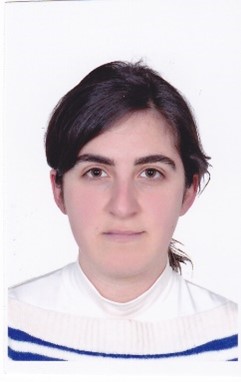
Mary Alikian
Principal Clinical Scientist, Birmingham Children’s and Women’s NHS Trust
Project: Bridging the Gap between Technological Advances and Standardised Clinical Implementation
Advances in new technologies in addition to large scale projects such as the 100K Genome Project (100KGP) have paved the way for the accelerated implementation of translational technologies into routine clinical service, breaking the conventional lag that accompanies this process.
Long read sequencing, copy number variant analysis using sequencing technologies are all novel methods that bring unique benefits to patient outcome. A critical aspect inherent to these technologies is the lack of quality metrics and control materials that can minimise false negative reports. The need for quality control and standardization is often what prevents hasty clinical adoption of new technologies.
The NML, MHRA and UKAS are partnering with Mary Alikian with the aim to bridge the gap between the technical advances and their standardised implementation into clinical service. The objective is to conduct a survey scoping the quality-related culture across the network of seven Genomic Laboratory Hubs (GLHs).The longer-term vision formulates around building on the findings from the survey and empowering a focused working group to set priorities and action points, provide expert guidance and form a collaborative community encouraging knowledge transfer, training, and cross-GLH standardisation of novel technologies.
 Sarah Misson-Yates
Sarah Misson-Yates
Head of Dosimetry and Computing, Guy’s and St Thomas’s NHS foundation Trust
Project: Data sharing and protocols for quality improvement through national networks
Radiotherapy treatments are planned to maximise the radiation dose to the tumour volume and minimise the dose to organs at risk, to ensure that as much of the tumour is eradicated as possible whilst limiting the damage to normal tissues. Prior to commencing a new treatment technique or joining a clinical trial, radiotherapy centres should have a dosimetry audit to ensure the patient’s treatment can be delivered safely within the set limits.
NPL have been undertaking dosimetry audits for over 30 years for new techniques and are developing a centralised database for audit reports and results called DAART (dosimetry audit for advanced Radiotherapy). Audits for standard techniques, new equipment and routine annual audits are undertaken by the Institute of Physics and Engineering in Medicine’s (IPEM) Interdepartmental Dosimetry Audit Group (IDA).
For newer techniques, ongoing audit is not directly funded, so regions develop their own local protocols to assess centres maintenance of standards, preventing wide adoption of one national protocol. This also prevents direct comparison of data between centres to ensure that the dosimetric accuracy of patients’ treatments are being maintained and improved.
The partnership between Sarah Mission-Yates, NPL and UKAS will provide a direct collaboration with the IPEM IDA to develop national dosimetry audit protocols which can be delivered by the IDA to provide ongoing safety checks.
The project will also allow for the DAART database to be developed to include IDA audit data so that centres can access their audit data in one location.
These outcomes will complete the radiotherapy dosimetry audit cycle providing additional safety checks on the delivery of patient’s treatment throughout the UK and enable the ability of centres to track their data in a centralised location.
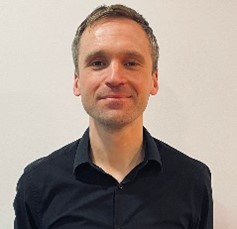
Stuart Scott
Centre Manager, UK NEQAS for Leucocyte Immunophenotyping
Project: Standardising acute myeloid leukaemia minimal residual disease testing
Measurable residual disease testing allows the detection of extremely low levels of malignant cells remaining after cancer treatment. It can be used to predict which patients will relapse and which will maintain their remission.
There are several exciting new treatments becoming available for patients with acute myeloid leukemia (AML). To assess the effectiveness of these treatments within clinicals trial highly accurate measurable residual testing is required which is comparable between laboratories.
The partnership between Stuart Scott, NML, MHRA and UKAS will assess the need for standardisation of this measurable residual disease testing for AML.
The project will also draw on the expertise of the NHS and research scientists who developed the first WHO International Genetic Reference Panel for Quantitation of BCR-ABL1 mRNA in Chronic Myeloid Leukemia - a previous collaboration with MHRA that has played an important role in the remarkable improvements seen in life expectancy in this disease.
Ultimately the project will look to improve testing for AML measurable residual disease testing, improving the accuracy of clinical trials and facilitating better patient management.
Rachel Carling
Viapath, Guy's & St Thomas' NHSFT
Newborn Blood Spot Screening is carried out for nearly 775,000 babies per year. The screening laboratories across the UK measure for the different levels of hormones or amino acids in the blood, therefore ensuring harmonisation between them is vital.
The NML partnered with Dr Rachel Carling, Consultant Clinical Scientist, Director of Service and Clinical Lead, Viapath, Guys & St Thomas' NHS Foundation Trust. During this project we helped further improve the methodology underpinning the Newborn Blood Spot Screening programme, supporting harmonisation of results across the UK. Since the KTP project officially finished, we have continued to collaborate with NHS England on this work. An inter-laboratory study using the optimised methods developed under the KTP, has been run with some of the newborn screening labs with a view to transfer the outcomes into a best practice guidance on how to improve measurements. An additional study with the European Research Network for evaluation and improvement of screening, Diagnosis and treatment of Inherited disorders of Metabolism (ERNDIM) is underway. On the basis of this work, the advisory board for the national Inherited Metabolic Disorders (IMD) screening programme that provides independent advice to Public Health England (PHE), are discussing the need for a national procurement of traceable standards.
Together, we are helping to deliver greater certainty for the Newborn Blood Spot Screening programme, impacting on every child born in the UK. The continued outcomes of this project will provide a framework within which more analytes can be added to the UK’s screening programme to increase the range of diseases that can be tested for at birth.
Kathryn Harris
Great Ormond Street Hospital (GOSH) NHS Foundation Trust

A new generation of diagnostic techniques are starting to be adopted by clinical laboratories. These techniques are potentially game-changing for laboratory medicine; however standardisation is critical for successful adoption into routine testing. In particular, Next Generation Sequencing (NGS) can be used to detect antimicrobial resistance (AMR) by examining the genomes of bacteria. However, one potential limitation of this NGS technique is the time it takes to produce a result, with the large batch sizes required to make the testing cost efficient being a major factor in this.
The NML partnered with Dr Kathryn Harris, Principal Clinical Scientist at Great Ormond Street Hospital (GOSH) NHS Foundation Trust to evaluate the use of more rapid techniques (nanopore sequencing) for detection of Antimicrobial Resistance (AMR) and to provide standardisation of the method.
A workshop was delivered in September 2019 at the Royal Free Hospital, UCL to clinical laboratory scientists that showcased the rapid portable sequencing technology platform (MinION), providing information on how to use the technology in clinical scenarios.
Data has been transferred to the sequencing facility at GOSH to determine the performance characteristics of the method to present a successful business case to the Trust to embed the technology into routine service. There are further plans to look at how the application of sequencing approaches can impact on patient management as part of a larger National Institute for Health Research (NIHR) application.
The impact of this project to patients includes rapid, near-patient testing, reduction in cross-transmission of AMR infections in hospitals and the wider societal benefits of reducing AMR globally.
The NML and Dr Kathryn Harris continue to collaborate and are working on applying this technology in clinical scenarios with a new EMPIR project focused on metrology to enable rapid and accurate clinical measurements in acute management of sepsis.
Isabelle Delon
East NHS Genomic Laboratory Hub

Clinical genomic laboratories perform hundreds of tests that help inform patients of the likely cause of their symptoms or predict the severity of disease to inform treatment. As genomic testing becomes part of mainstream medicine, the requirement for improved test quality and comparability is increasing.
In a joint project, Dr Isabelle Delon FRCPath, Lead Clinical Scientist at the East NHS Genomic Laboratory Hub, the NML, NIBSC and UKAS have established a group comprising healthcare genomic scientists, measurement and accreditation experts. With this group we are developing a reference document offering accessible background information, physical reference materials, and practical guidance for comprehensive evaluation of measurement uncertainty in genomic laboratory tests.
A workshop was delivered in September 2019 on the application of measurement uncertainty in clinical genomic testing to inform and engage with the clinical community. The workshop, attended by over 70 scientists from the UK and Europe working in genomic testing, discussed the needs and drivers for establishing a coherent and unified approach. The proposed framework was presented and its application discussed in the context of tests for cancer validated under a second NHS KTP based at the North West Genomic Laboratory Hub.
As a result of this partnership, the reference document will offer expert practical guidance for clinical genomic laboratories to comply with regulatory requirements and assure the quality of clinical genomic measurements.
Joanne Adaway
Manchester University Hospital NHS Foundation Trust
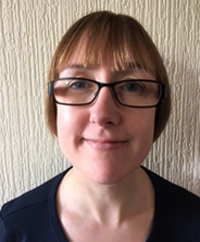
Aldosterone is used, along with plasma renin activity, for the diagnosis of primary hyperaldosteronism (excess production of aldosterone by the adrenal glands) in patients with hypertension. lt is thought that up to 10% of patients with hypertension may have primary hyperaldosteronism, which is managed differently to other forms of hypertension, however there is currently no reference method available for aldosterone in the UK. Diagnostic cut-offs for primary hyperaldosteronism differ widely between laboratories, with a variety of different methods being used for the quantification of hyperaldosteronism including immunoassay and mass spectrometry.
Reference ranges used are often not appropriate or method specific, as NHS laboratories do not have the resources to develop in-house reference ranges appropriate for their methodology, therefore accurate interpretation of results is difficult.
The NML partnered with Dr Joanne Adaway, Principal Clinical Scientist at Manchester University Hospital NHS Foundation Trust to develop a reference method for aldosterone. The method developed for the value assignment of aldosterone in plasma is being validated against our ISO17025 accreditation with the aim to progress to value assignment for a Proficiency Testing scheme. This will help standardise aldosterone measurement throughout the UK thus minimising misinterpretation of results and misdiagnosis of patients and improving the quality of patient care.
John Thornton
Institute of Physics and Engineering in Medicine
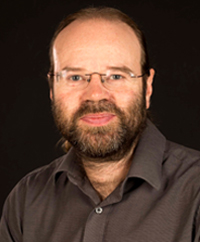
Magnetic resonance imaging (MRI) is ubiquitous medical imaging technology essential in the management of virtually all neurological conditions. Conventionally, this generates anatomical images which are interpreted by expert radiologists. From the perspective of a Medical Physicist, MRI also has great potential to deliver precision image-based measurements which reflect disease status. While the value of this in principle is well-established, this approach has thus far largely failed to impact upon NHS clinical service. The project addressed technological barriers to clinical adoption of MRI biomarkers, and supported radiological reporting providing earlier and more precise diagnosis.
The KTP project allowed NPL to partner with UCL and to investigate reproducibility in quantitative MRI. The partnership led to a multi-site investigation of the reproducibility of T2-mapping approaches using clinical MRI facilities, but since then has formed the basis for a much larger project centred on similar concerns. We have built on the KTP work and won European funding to develop traceable metrology for several different forms of quantitative MRI, with UCL coordinating an international multi-site trial. This work aims to develop new best practice and guidance, enabling wider adoption of quantitative MRI methods and improved QA for MRI scanners, underpinning clinical trials, AI approaches, and other large scale studies. The KTP programme was instrumental in establishing this relationship and focussing on the most relevant problems to support diffusion of innovation through the wider NHS system.
Anthony Rowbottom
Royal College of Pathology & Association of Clinical Biochemistry and Laboratory Medicine
The application of Raman spectroscopy has been shown to provide vital diagnostic information in a wide variety of clinical scenarios including cancer, neurodegenerative disease, anti-microbial resistance, renal disease and immunodeficiency. This partnership with Dr Anthony Rowbottom and NPL considered the requirements of method standardisation and accreditation to facilitate wider adoption of this technology to clinical practice. The project considered challenges for quality assurance and provision of a reference library and guidelines.
The project enabled national measurement scientists and clinicians to come together to develop the use of Raman Spectroscopy. The creation of a virtual professional network will deliver greater opportunities for innovative collaborative research as well as supporting earlier adoption into the NHS.
Fiammetta Fedele
Health and Care Professional Council & Institute of Physics and Engineering in Medicine
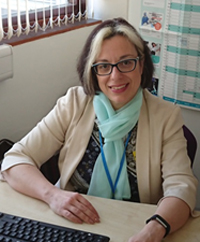
This partnership with Dr Fiammetta Fedele and NPL focused on the development of tools and techniques to standardise treatment planning and dosimetry for MRgHIFU. This included designing 3D printed anthropomorphic tissue mimicking phantoms with embedded sensing and the development of new computational tool to estimate head dose distribution.
Fiammetta commented “The CSO KTP is a dream come true to promote new models of NHS professionals working together with the National Measurement System, academic partners to fast track new technologies in the NHS.” The outcomes from the project are already being exploited with the development of new and improved quality assurance techniques which have been disseminated and communicated across clinical networks in the UK and internationally.
Geoffrey Heyes
Institute of Physics and Engineering in Medicine
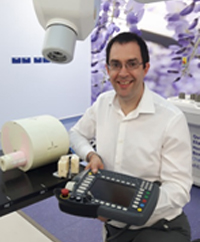
This partnership with Dr Geoffrey Heyes and NPL involved the use of imaging to characterise the very small diameter beams of radiation that are used in radiotherapy. Current methods of measuring radiotherapy beams use calibrated ionisation chambers that have to be placed within the treatment beam. For the small field sizes used in radiosurgery, finding a suitable detector and ensuring its correct positioning can be challenging. Geoff's project sought to image the radiotherapy beam directly using scintillation. These images could be used to perform checks on the performance of the treatment accelerator without the need for an additional detector. The project also looked to exploit the phenomenon of Cerenkov radiation to image radiotherapy treatment beams as they exit a patient to measure the delivered dose. Put together, these research areas have the potential to increase the clinical availability of expensive treatment accelerators, and improve the accuracy of our dose calculation techniques.
The KTP project has enabled Geoff to test new ideas and undertake proof-of-concept experiments into clinical practice. It has created more collaborative partnerships and brought more ideas to the fore. Going forward it is hoped the improvements made to the measurements we make improve access to more sophisticated radiotherapy treatments.
For further information about the Office of the Chief Scientific Officer, please see the NHS England website.
Health Education and Improvment Wales
As the strategic workforce and education authority for NHS Wales, Health Education and Improvement Wales (HEIW)’s key responsibility is commissioning, delivering and/or funding education and training, which for the Healthcare Science profession covers all stages of the career pathway including funding all equivalence routes to registration. HEIW also has workforce improvement responsibilities including leadership development, and management of the national Healthcare Science Programme.
Compassionate leadership is fundamental to the future of the NHS and wellbeing of our workforce. HEIW are world leaders in their work with Professor Michael West, with the leadership education platform Gwella receiving international acclaim. You can access the platform here: Gwella Leadership Portal.
The Healthcare Science Programme leads strategic developments in the NHS Wales Healthcare Science professions, for the benefit of the 7,000 Healthcare Scientists, Biomedical Scientists, Radiographers and Operating Department Practitioners and their supporting workforces. In partnership with Welsh Government, Executives Directors of Therapies and Health Science, HEIW and the professions, developments reach across themes of professional culture and integration, workforce and education, research and innovation, and service transformation For more information, please see the Healthcare Science Cymru website.
The Chief Scientist Office NHS Scotland
Professor Catherine Ross is Chief Scientific Officer for Scottish Government, providing expert, professional advice to ministers and government on all aspects of healthcare science, including where there are impacts relating to the scientific workforce within the NHS in Scotland. This remit covers areas such as education, research and clinical practice.
The Chief Scientific Officer is also responsible for:
- overseeing the strategic direction for all healthcare scientists (HCS) in Scotland
- leading on international health issues from a HCS perspective
- co-chairing the Diagnostic Strategic Network for Scotland
- strategic oversight and direction for healthcare science policy in Scotland
For further information, please see the Scottish Government website.
Health and Social Care, Northern Ireland
Professor Ian Young is the Chief Scientific Advisor to the Department of Health and Director of Research and Development for Health and Social Care, providing leadership across the Health and Social Care (HSC) sector enabling the provision of high quality evidence to improve care for patients, clients and the general population, adding to our knowledge and understanding of health, disease, diagnoses, treatment and care. He is also Professor of Medicine, Queen’s University Belfast, and Consultant Chemical Pathologist, Belfast Health and Social Care Trust.
The National Measurement System – providing confidence in innovation
The UK National Measurement System (NMS) provides the UK with an infrastructure of laboratories that deliver world-class measurement science and technology, and provide traceable and highly accurate standards of measurement. The UK invests in an infrastructure that enables measurements to be made with integrity and consistency by holding and maintaining internationally-recognised measurement standards and practices.
Good measurement enables scientific research to be quantified and reproduced, ultimately enabling the uptake of new discoveries and increasing the speed at which scientific consensus (for instance on the health effects of pollutants) is reached. The UK has a world-leading science base and measurement infrastructure that collaborate closely to both apply measurement to scientific research and develop new measurement approaches from scientific discoveries.
The NMS is delivered through the Department for Science, Innovation and Technology (DSIT) by the UK's Measurement Institutes. In this programme, we will be engaging with three of the institutes that deliver the National Measurement System:
- National Physical Laboratory (NPL) – the UK's National Metrology Institute, and a world-leading centre of excellence in developing and applying the most accurate measurement standards, science and technology available.
- National Measurement Laboratory (NML), hosted at LGC - and Designated Institute for chemical and bio-measurement. We deliver world-leading chemical and bio-measurement science (metrology) to improve quality of life, promote economic growth in the UK and ensure the sound basis for trade based on a harmonised international system of accurate and reliable measurements, through our state-of-the-art measurement capabilities.
- The Medicines and Healthcare products Regulatory Agency (MHRA) is an executive agency of the Department of Health and Social Care in the United Kingdom which is responsible for ensuring that medicines and medical devices work and are acceptably safe.
How the NMS supports medical science
The institutes delivering the National Measurement System are involved in a wide range of research activities that support medical science. Examples include:
- Regenerative medicine and cell therapies, including validating new analytical techniques, reference standards, and metrology for cell and gene therapy
- Diagnostics for precision medicine, including genomics, bio imaging, and standardisation of tests, techniques and diagnostics
- Improved clinical diagnostics – tools and structure to enable reproducible measurements
- Infectious disease diagnostics and antimicrobial resistance control – improved assays and comparability/traceability
- Big data – standards and guidelines for data accuracy and traceability
- Cancer therapies, including traceability in radiotherapy and ultrasound, and new techniques for cancer detection and treatment
- Medical imaging, including mass spectrometry for surface and interface analysis, biosurfaces and drug delivery systems
- Wound management, including thermal imaging, tissue regeneration and wound size measurement
For further information about the research and services offered by the NMS labs, take a look at their webpages:
UKAS
UKAS Accreditation within the health and social care sector provides reassurance to patients, commissioners and health and social care providers that the service that is being provided has been independently evaluated against recognised standards and has achieved a national mark of quality. Accreditation supports consistency in the quality of care, and provides a mechanism for measuring quality improvement with quality patient outcomes at its core.
The influence and use of UKAS Accreditation in healthcare continues to grow across a wide range of areas including pathology laboratories, point of care testing services, imaging services, physiological sciences, adult care homes and dental providers. New areas of accreditation are currently being developed to cover medical physics and clinical engineering, and clinical service certification. Further information is available on the UKAS website.